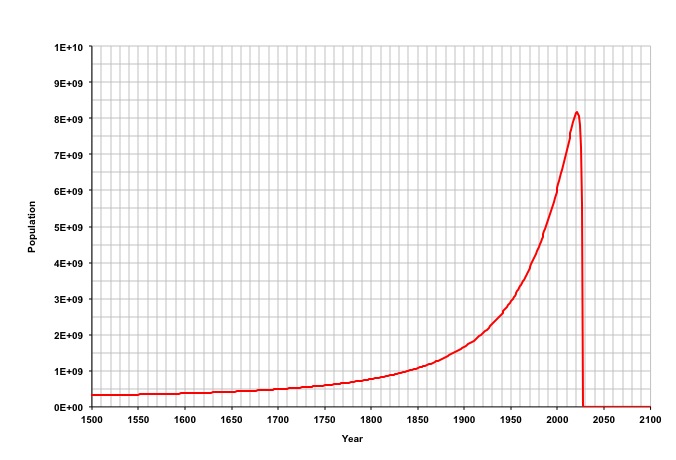
The Earth is running out of resources that our civilization needs to support its billions of people. Humanity has been depleting those resources for thousands of years by extracting them, making them unusable, and, in the case of other species, killing them.
If we do not act quickly, we will soon join the countless other species that we have driven extinct.
Interesting Fact: The mass of resources available in 1 AD was equivalent to that of an asteroid six miles in diameter. We have consumed so much mass that such an asteroid would now be about a mile across.
See also:
- Projections
- Fatal Flaw
- Running Out of Time
- Remaining Resources: A Simulated History
- Happiness and Population Rate
- Happiness and Resources
- Happiness and Acceleration

We are literally treating the biosphere (Nature) as a non-renewable resource.
By 1994, we were consuming all of the resources renewably produced by Nature each year, and began effectively consuming the parts of the biosphere that create it.
If we continue on our present course, by 2016 we will be consuming more than twice as much, conceivably having killed off most of the species we depend upon for survival.
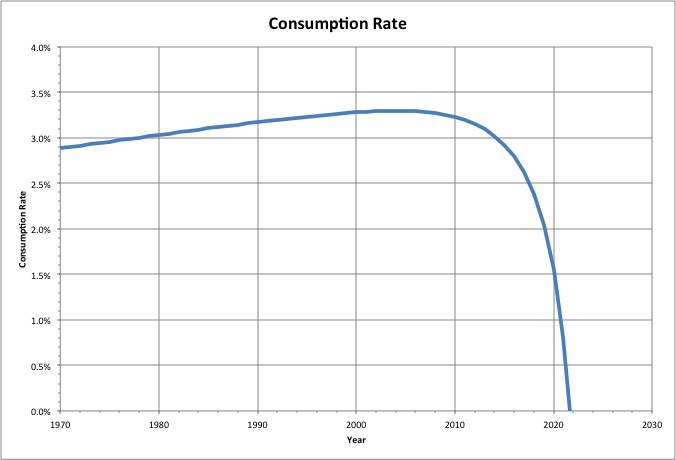
The annual rate of change in resources consumed (by mass) increased until 2004 and has been decreasing since then.
It is projected to reach zero — no growth — by 2022 and then go negative as the population crashes.
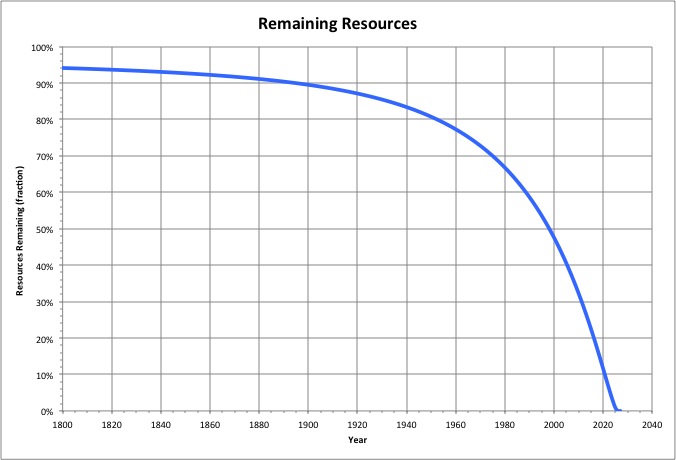
The total mass of resources that our population is keyed to declined by nearly 70% since 1 AD.
We are currently using nearly 2% of the original amount per year, which is more than 5% of the remaining amount.
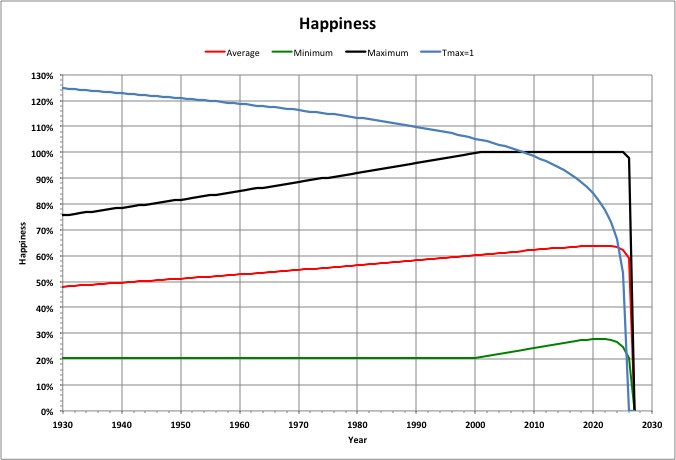
One simulation of how happiness, population, and available resources is changing over time assumes that maximum happiness increased over time while the minimum stayed the same. This could be maintained until 2001, when the highest limit was reached and the average continued to increase (also, resources had just dropped below 50%, in 1999).
The happiness (for the entire population) that would result in depleting all remaining resources in one year (Tmax=1) has decreased over time. In 2009, it dropped below 100%.
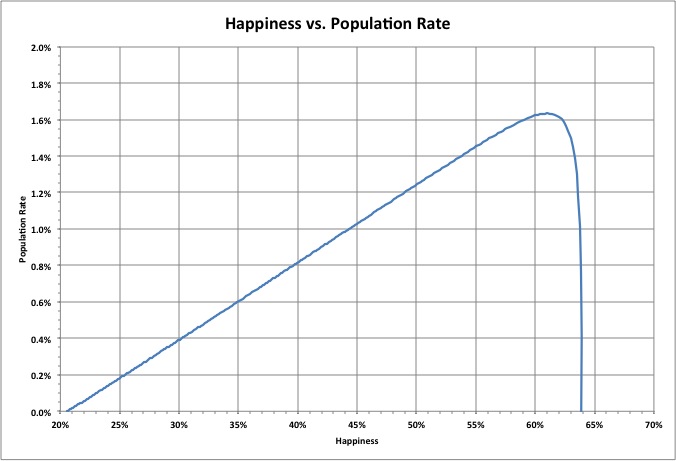
The annual rate of change in population appears to be correlated with happiness. It reached a peak in 2004 when happiness was 61%, and is projected to decline through the crash.
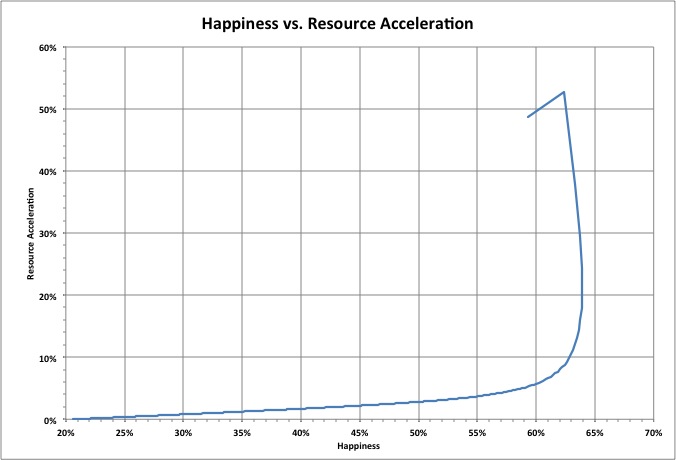
The decrease in total resources has also varied predictably with happiness. The rate of change of the rate of change in resources ("resource acceleration") increased almost linearly with happiness until over 100 years ago when happiness was about 2/3 of the 2/3 it will be approaching at the time of the crash.
For more analysis of this and other accelerations, see Happiness and Acceleration.
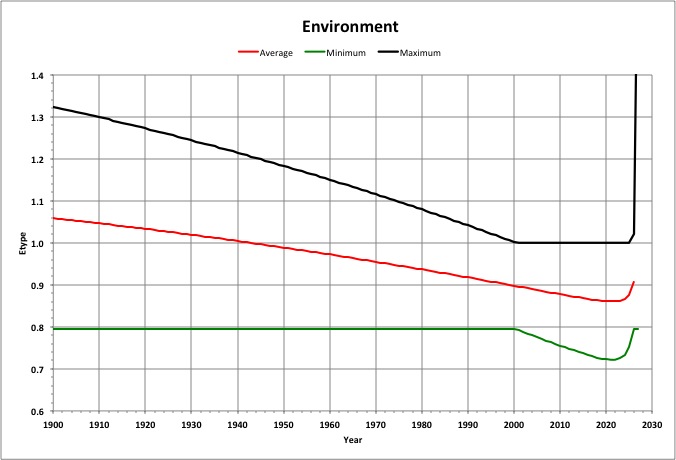
The resources we consume has gradually changed the environment we live in, enabling more of us to live longer and thrive.
In this representation, humanity is limited to the range from 0 to 1. The more the environment overlaps this range, the happier more of us will be.
In 1943, the average environment entered humanity's range.
In 1965, we stopped being able to increase the acceleration of its change
In 2001, the maximum part of the environment was pegged at the maximum part of the human range (corresponding to maximum happiness being reached by some people).
In 2007, change began to decelerate.
We will lose total control of the environment when our population peaks.
